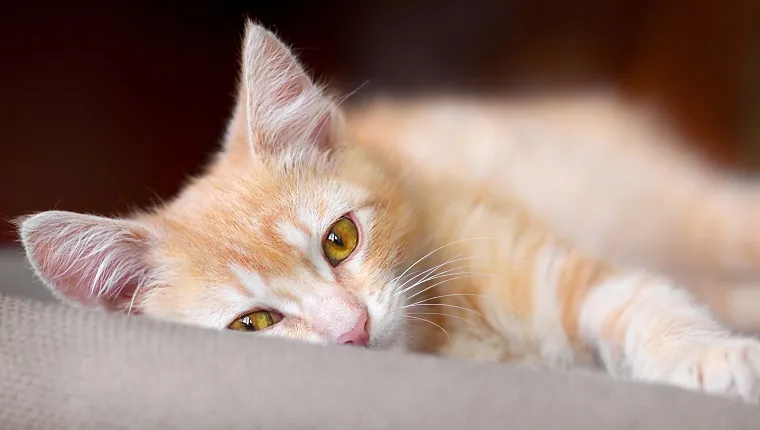Iron deficiency anemia in cats occurs when there isn’t enough iron in the cat’s body to produce adequate red blood cells. In these cases, the red blood cells are smaller than usual and cannot carry sufficient amounts of oxygen around the body.
This condition can often affect kittens and frequently results from blood loss.
If you see signs that your cat might be suffering from anemia, then you must consult your veterinarian for a proper diagnosis and course of treatment. Here’s what you should know about the symptoms, causes, and treatments of iron deficiency anemia in cats.
Symptoms Of Iron Deficiency Anemia In Cats
Iron deficiency anemia in cats can bring on a wide range of symptoms. Some of the most common symptoms include:
- Losing appetite and developing anorexia
- Acting lethargic and seeming weak
- Poop that’s very dark and tarry
- Seeming to act depressed
- Breathing quicker than usual
Causes Of Iron Deficiency Anemia In Cats

The main cause of iron deficiency anemia in cats is due to some sort of blood loss. The gastrointestinal tract is a common source of blood loss that results in this condition.
Other common causes include:
Additionally, it is estimated that up to half of all kittens aged between five and ten weeks will develop some sort of iron deficiency anemia. The condition often reverses itself once the kitten begins eating solid food.
Treatments For Iron Deficiency Anemia In Cats
If you suspect your cat is suffering from iron deficiency anemia, your veterinarian will want to carry out a full physical examination. They’ll order blood and urine tests, along with an examination of the bone marrow. They’ll also test the amount of iron in the body.
In some cases, vets may take samples of feces to look for telltale signs of parasites like hookworms.
If your vet confirms their diagnosis, the course of treatment will relate to the underlying condition causing the problem. They may recommend blood transfusions, along with measures to increase the levels of iron in the cat’s body, which a vet may administer via intravenous methods.
When your cat is recovering at home, it is vital that you keep up with regular visits to their vet so they can accurately monitor your cat’s iron levels. The vet will also likely recommend regular blood tests to stay on top of a recurrence of the condition.
Has your cat developed iron deficiency anemia? How is your vet helping your cat recover? Tell us all about it in the comments below.









